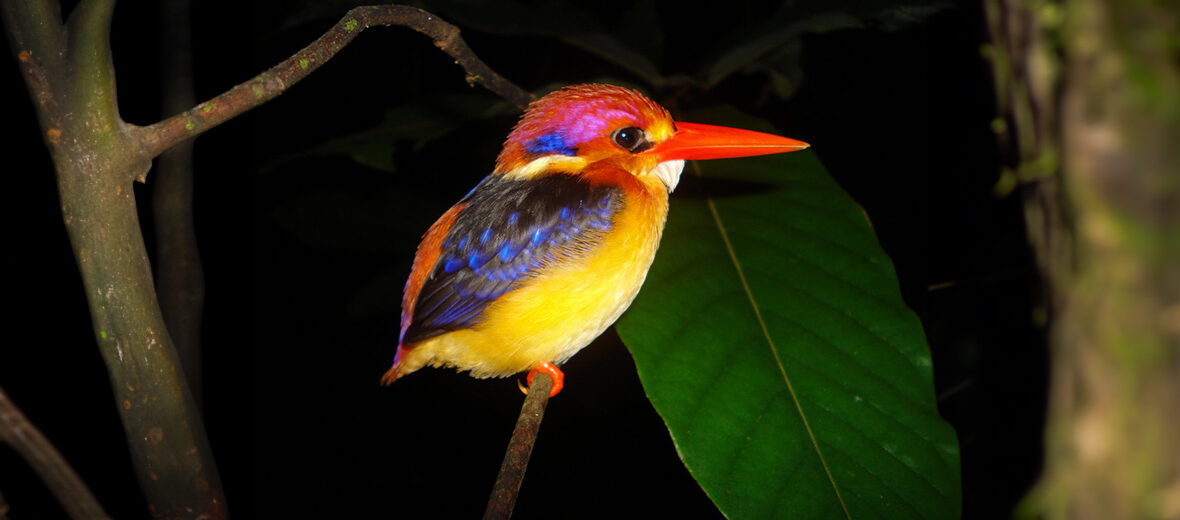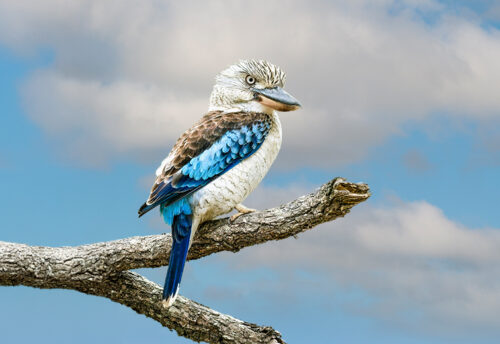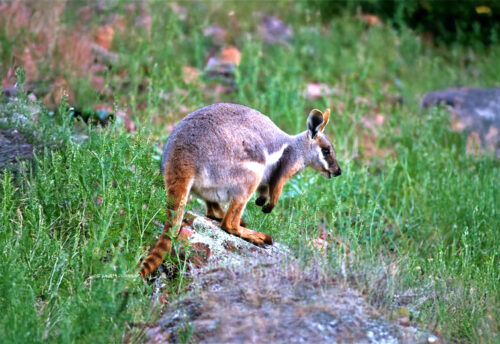
The black-backed dwarf kingfisher, aka three-toed kingfisher or oriental dwarf kingfisher, is a small, predatory bird that is endemic to India, Sri Lanka, southeastern Asia, and Australasia. They are threatened by habitat loss and destruction at the hands of residential and commercial developments, and deforestation at the hands of the logging industry. The IUCN lists these beautiful birds as Near Threatened. Their populations are also decreasing.
First the Stats…
Scientific name: Ceyx erithaca
Weight: Up to .67 ounce
Length: Up to 5.5 inches
Wingspan: Up to 4.88 inches
Lifespan: Up to 4+ years
Now on to the Facts!
1.) They tolerate a range of habitats such as deciduous and evergreen primary and secondary forests, alluvial forests (forests that grow in floodplains along rivers), overgrown rubber tree gardens, mangroves, and thick groupings of palms, bamboos, and/or shrubs, usually near lakes, ponds, or streams.
2.) Their diet consists of various insects, spiders, worms, crabs, fish, frogs, and lizards.
3.) These birds were originally described in 1758 by the Swedish naturalist and historian Carl Linnaeus.
4.) There are 2 recognized subspecies: C. e. erithaca and C. e. macrocarus.
5.) During the colder winter months some northern individuals will migrate south to the Malay Peninsula as well as Sumatra.
But wait, there’s more on the black-backed dwarf kingfisher!
6.) Nests are typically constructed along stream banks, road cuttings, terrestrial termitariums (termite nests), or in soil near the roots of a fallen tree. But they are built well away from the water.
7.) The female will lay up to 7 eggs, with 5 being the average.
Did you know…?
There are approximately 118 recognized species of kingfishers.
8.) Both the male and female incubate the eggs for up to 18 days.
9.) Chicks typically fledge in up to 20 days.
10.) When hunting for prey, larger prey items are brought back to their perch and repeatedly stuck with their beak to kill the prey, before swallowing it whole.
But wait, there’s still more on the black-backed dwarf kingfisher!
11.) Other threats to these birds are pollution; desiccation of ponds and streams; public dislike for kingfishers, including by fishermen; illegal human persecution; power lines; climate-induced changes in timing of migration and breeding; collisions with artificial obstacles, such as buildings in their flight path; exhaustion; starvation; dehydration; and erosion of stream banks.
12.) These birds are diurnal (active during the day).
Now a Short Black-Backed Dwarf Kingfisher Video!
Be sure to share & comment below! Also, check out the Critter Science YouTube channel. Videos added regularly!
Want to suggest a critter for me to write about? Let me know here.
Some source material acquired from: Wikipedia & IUCN
Photo credit: Pkhun



